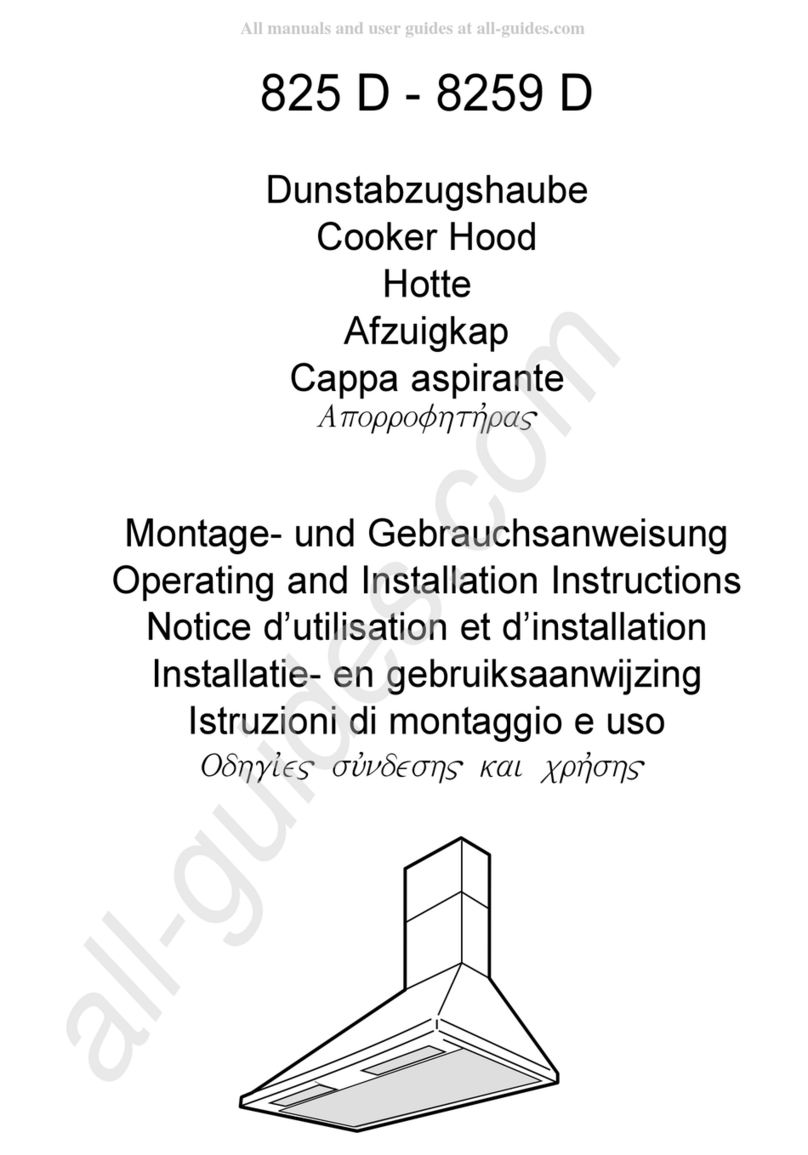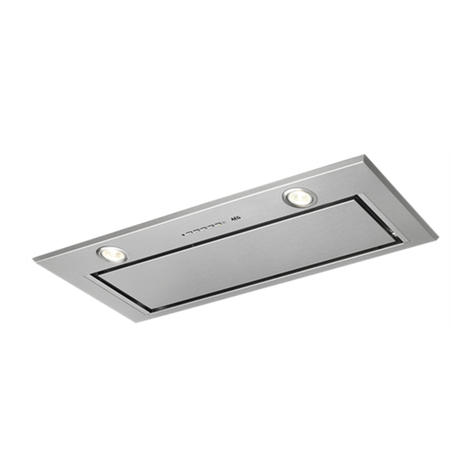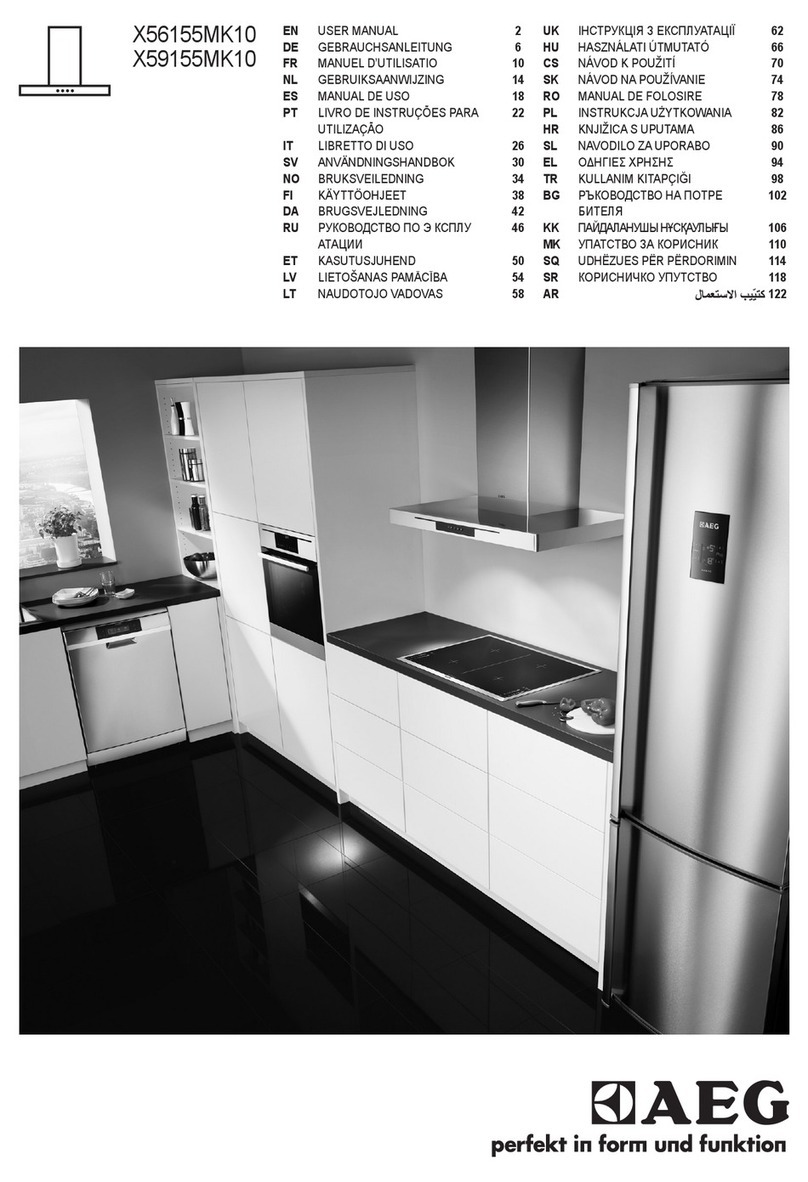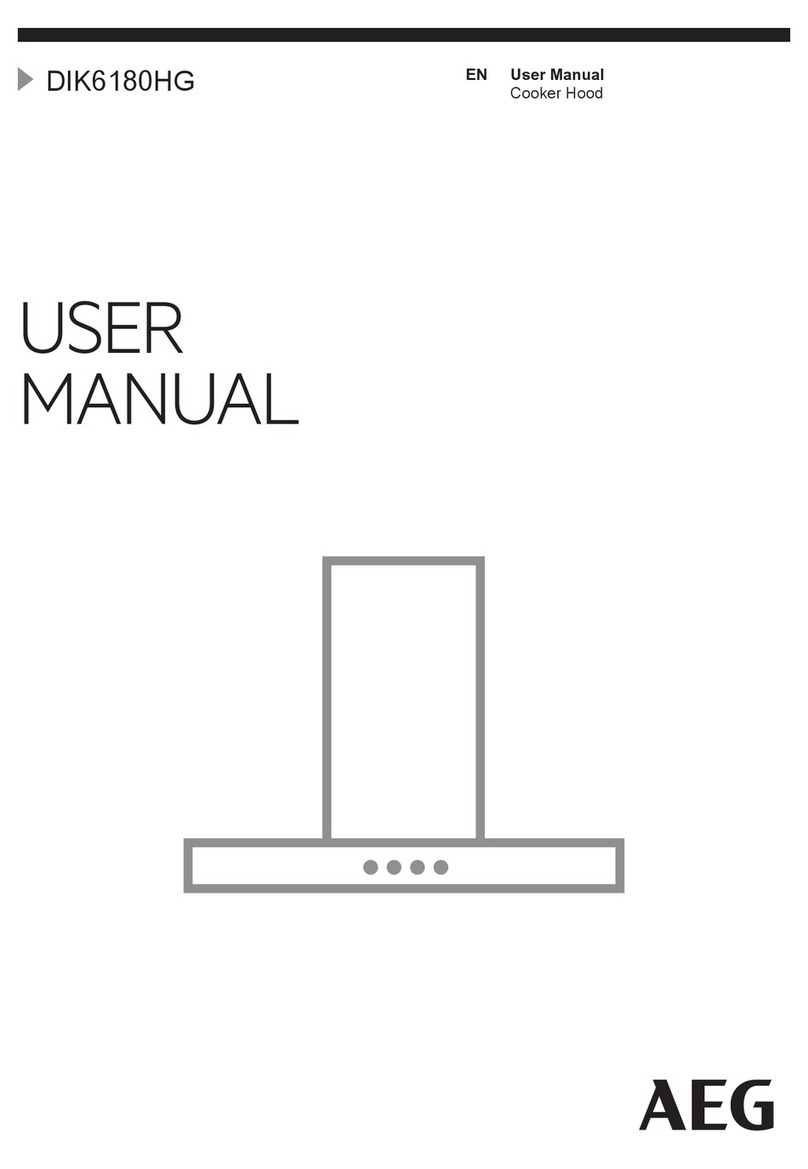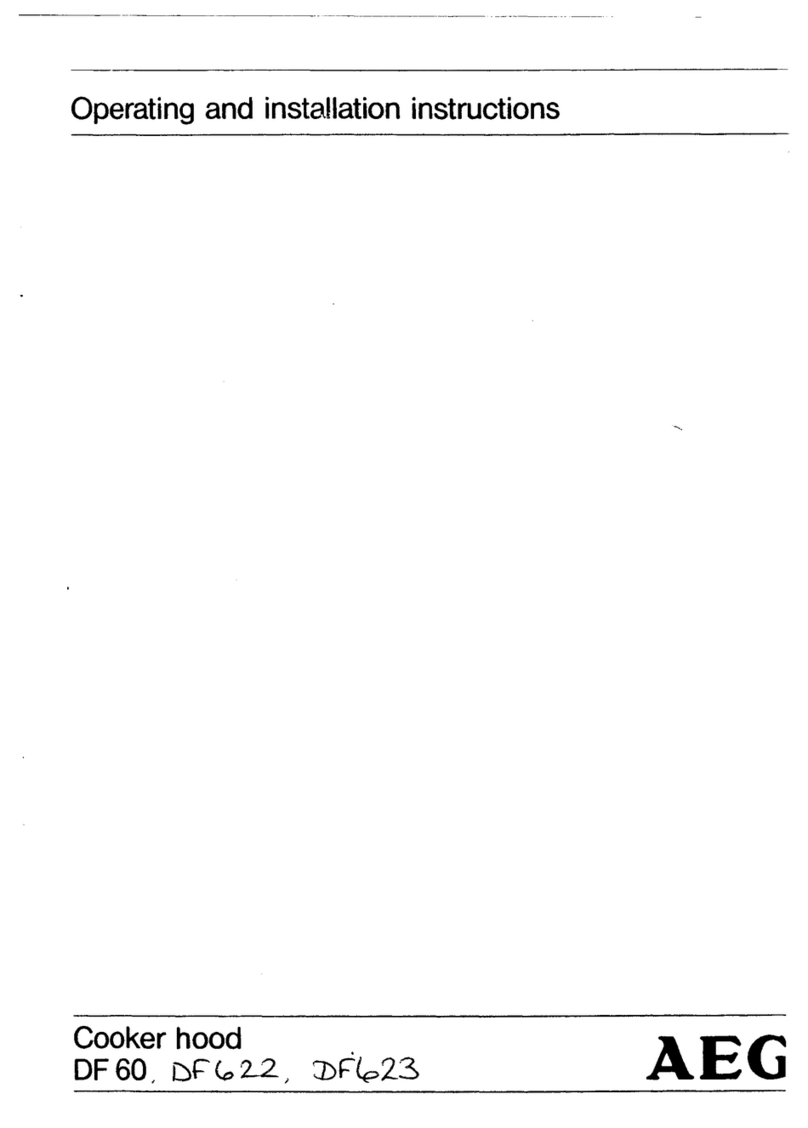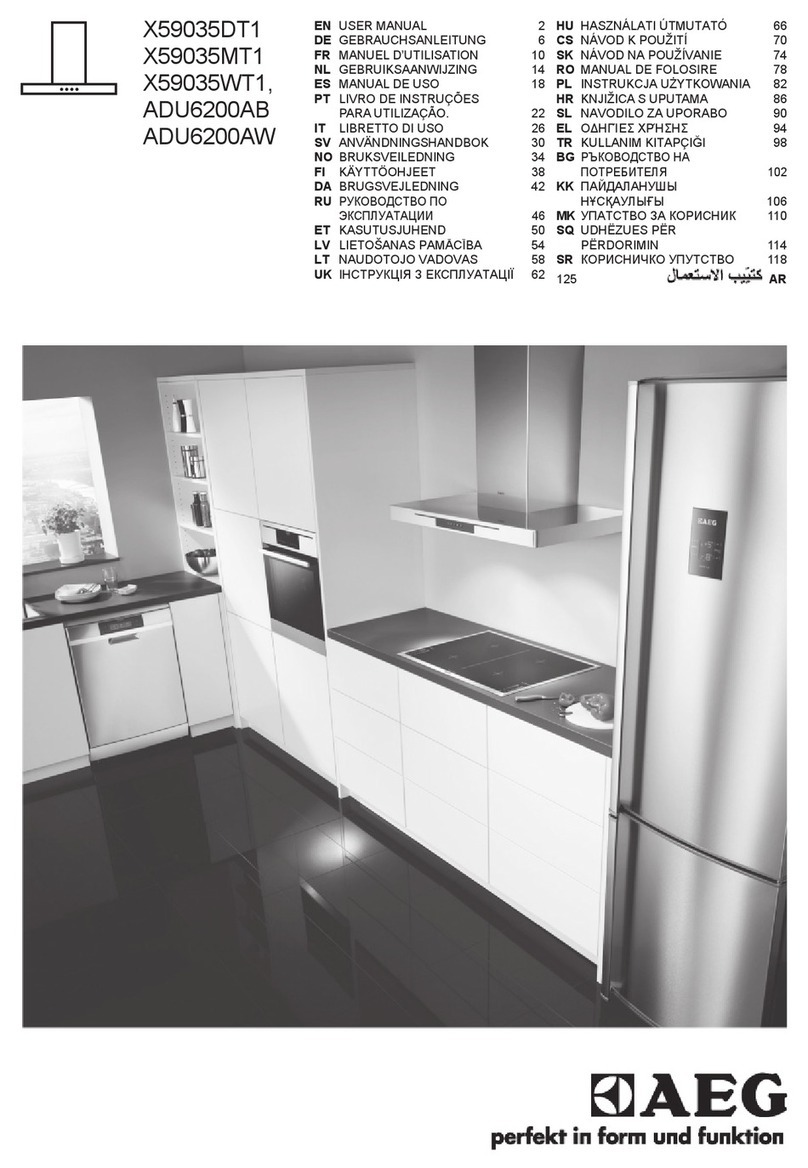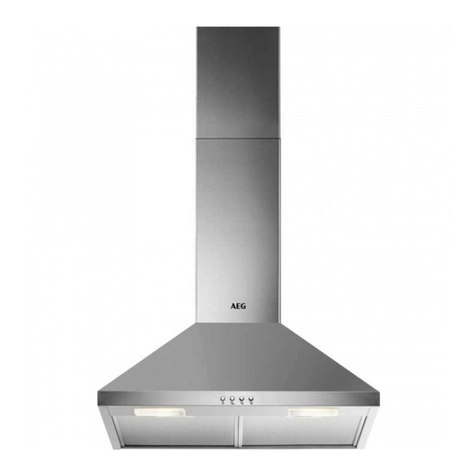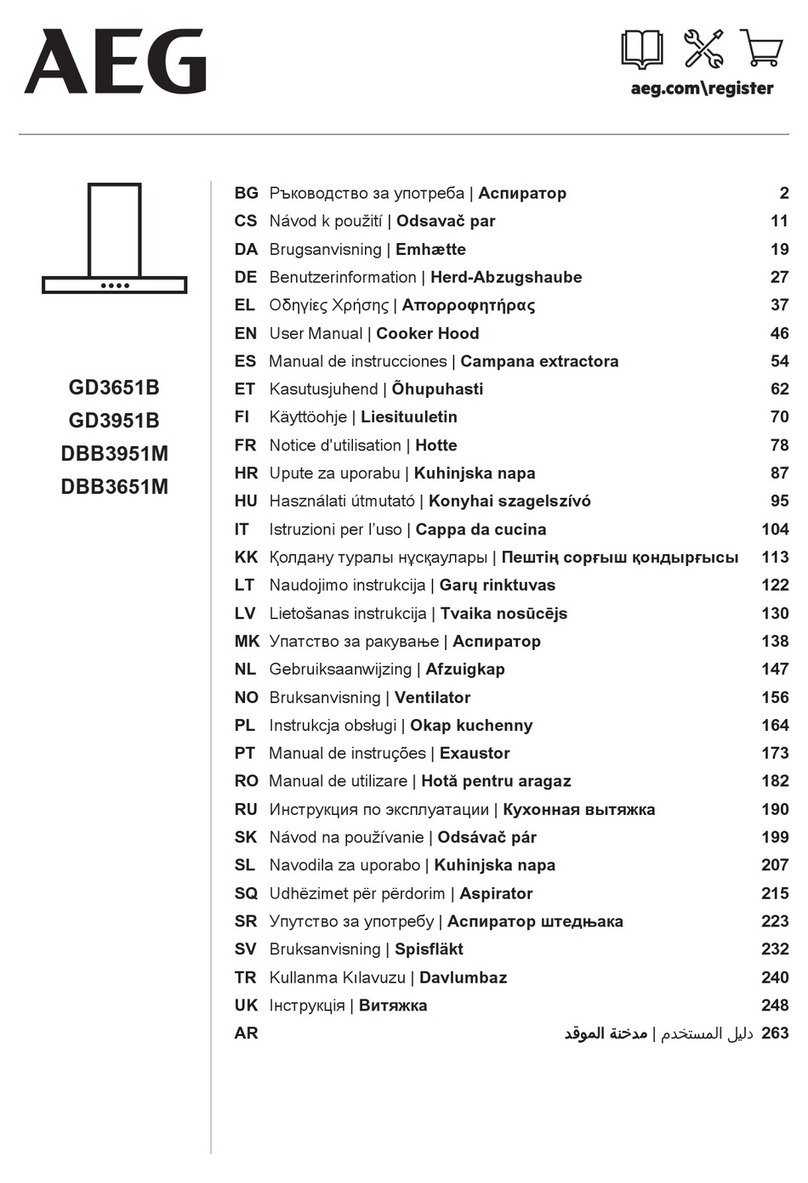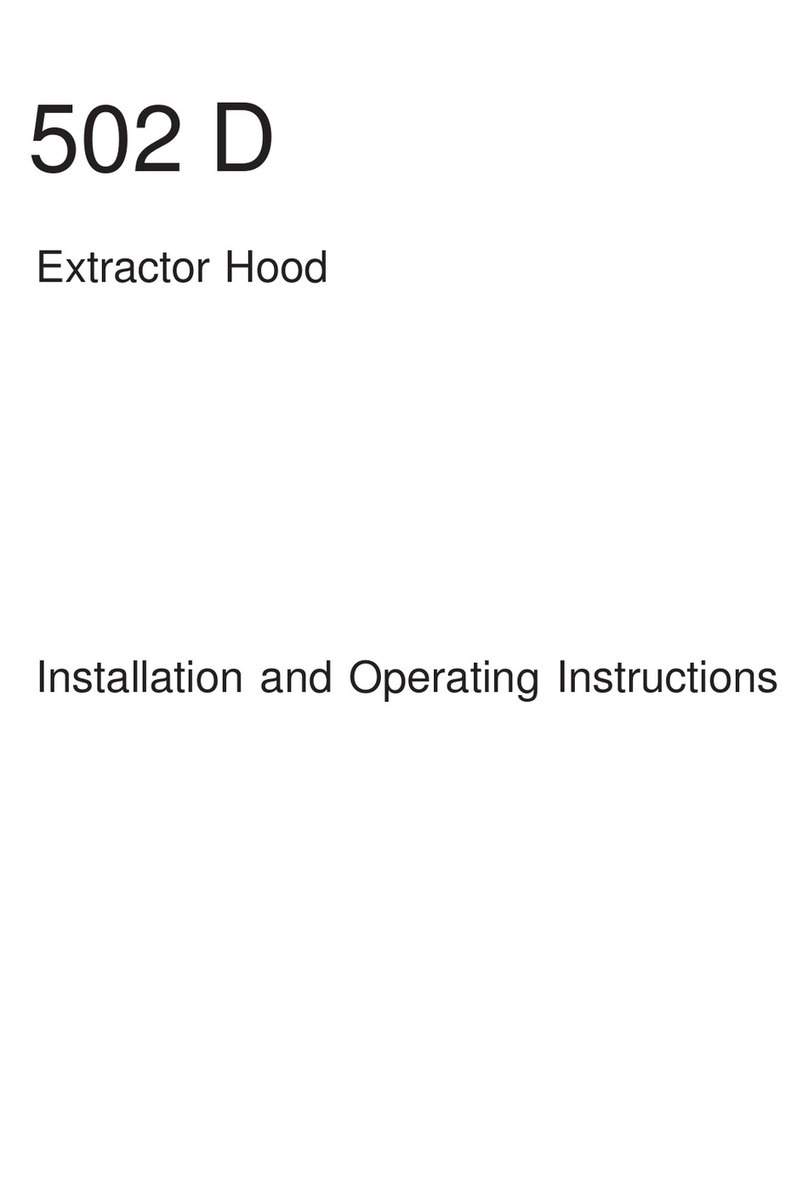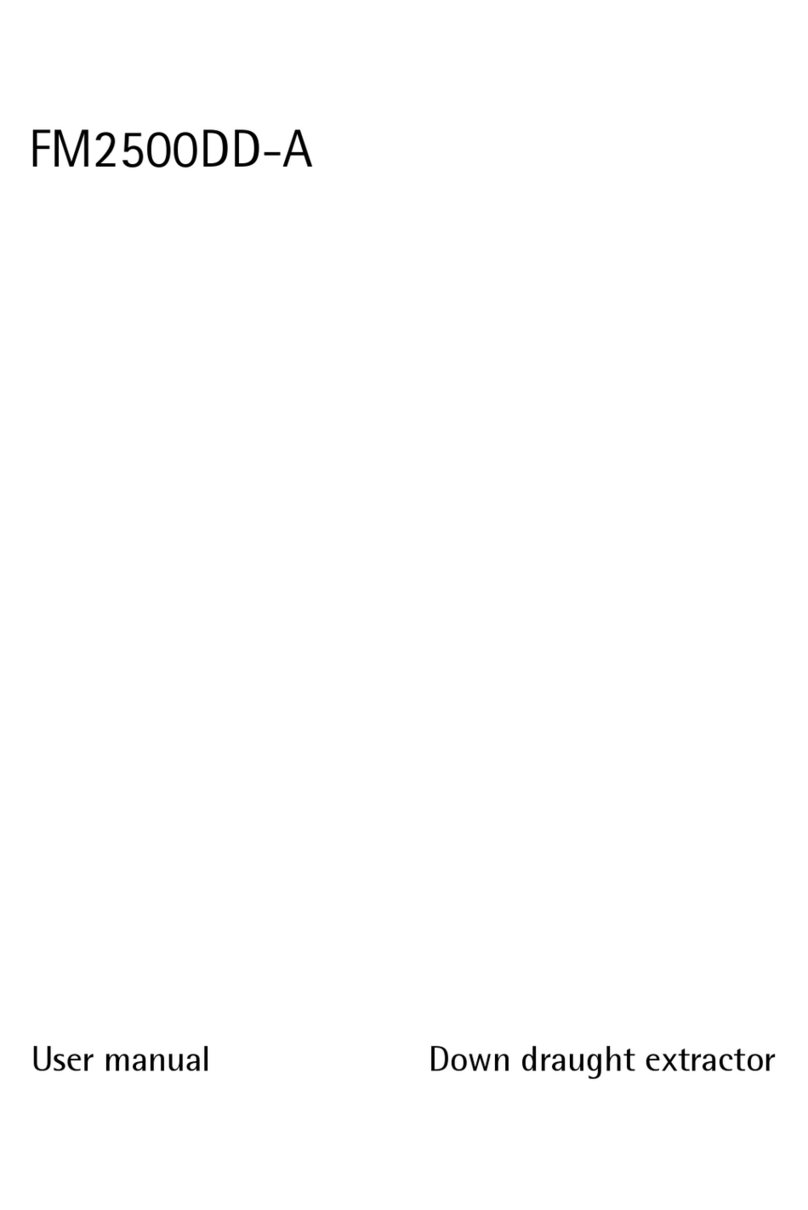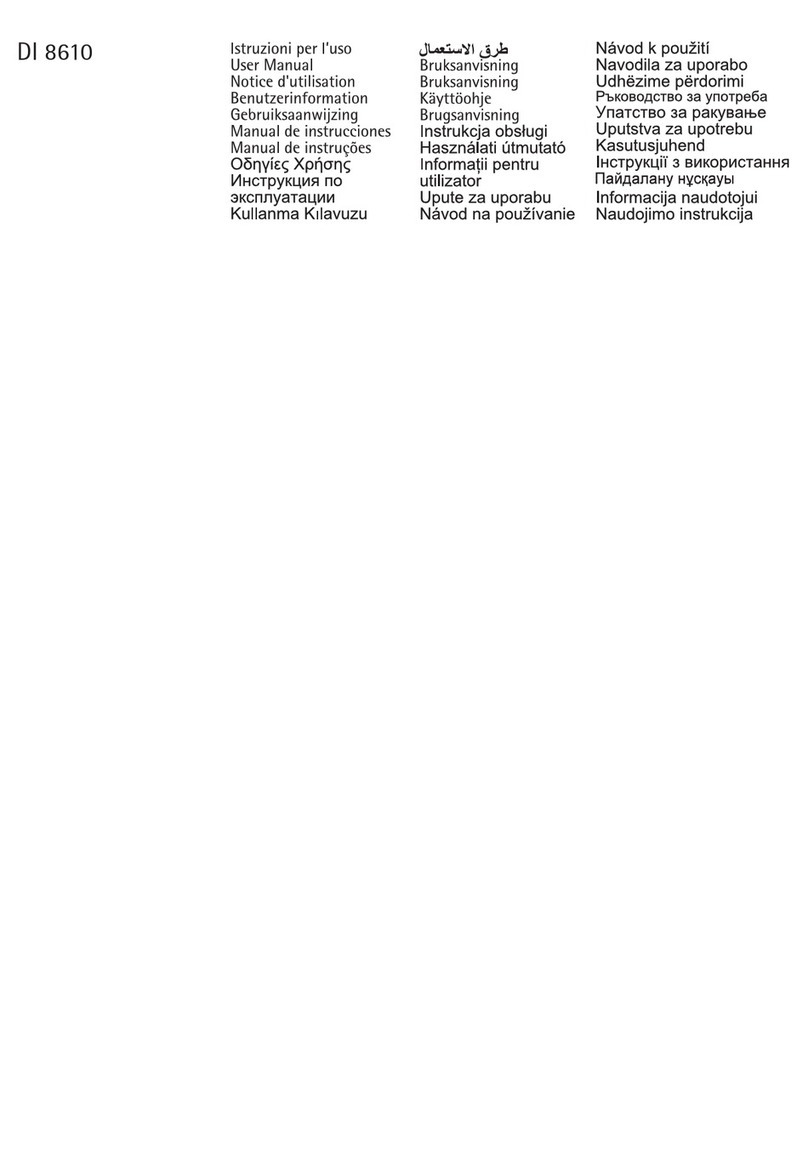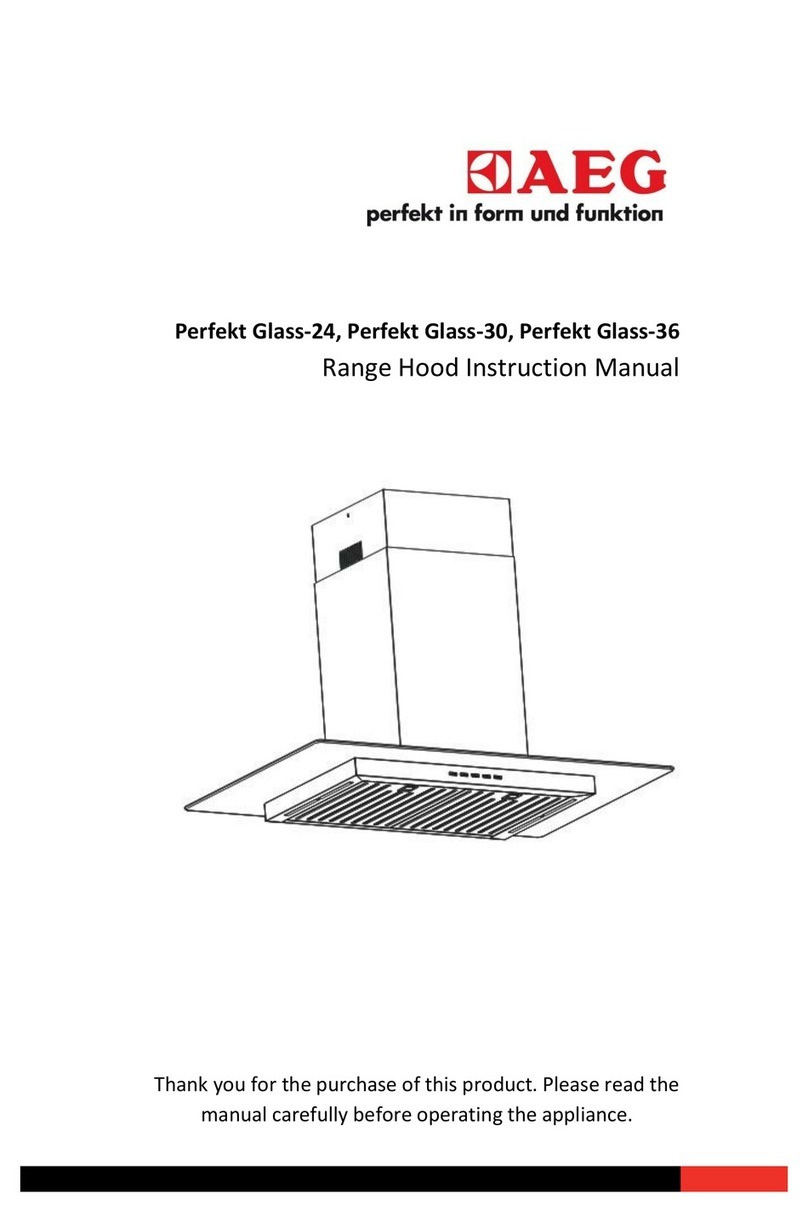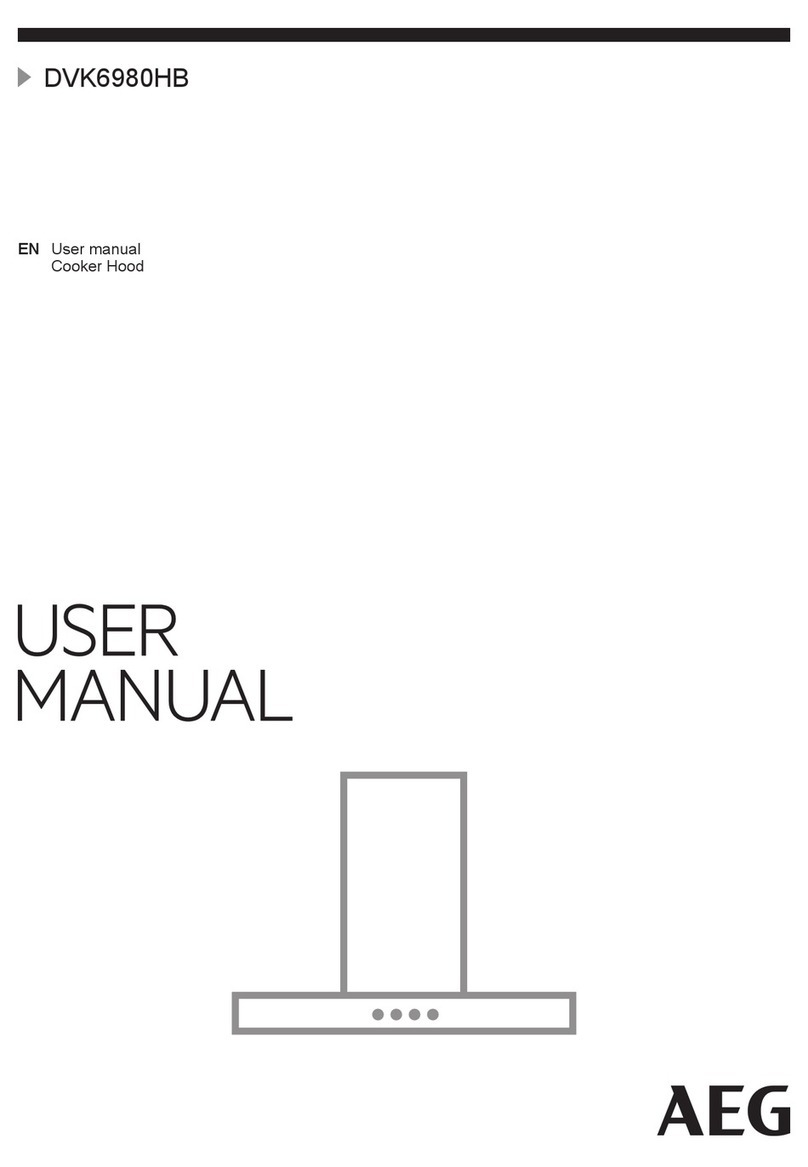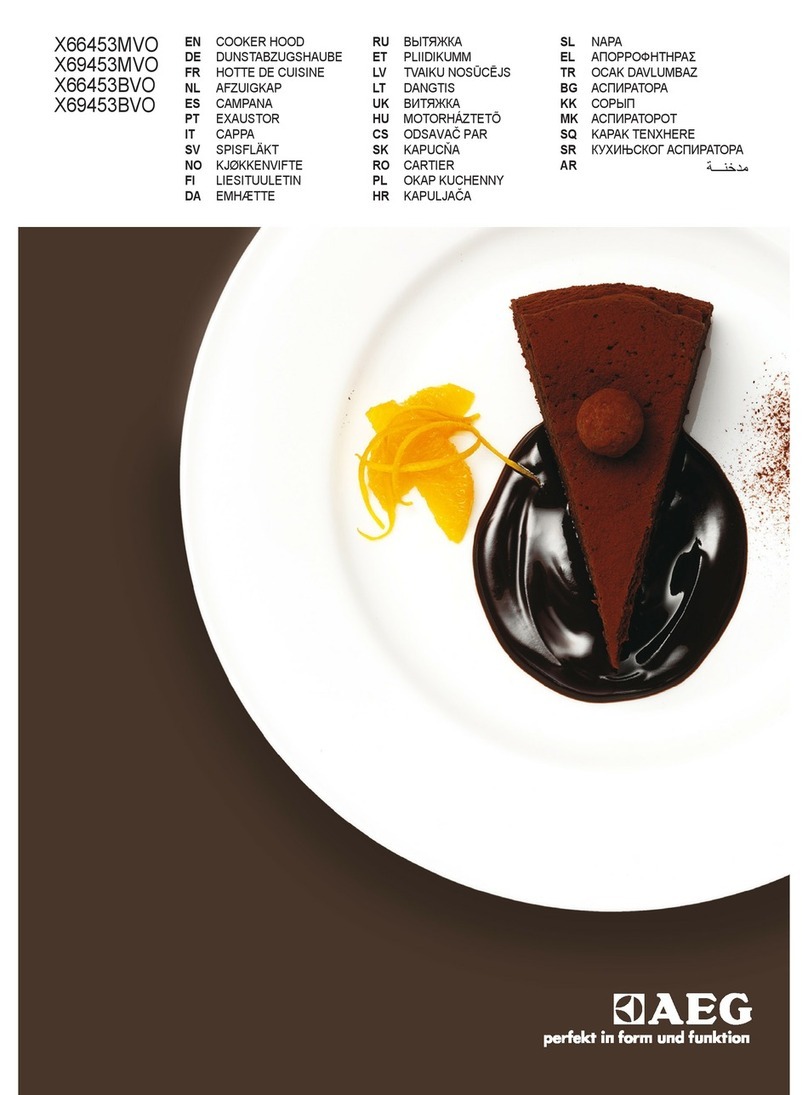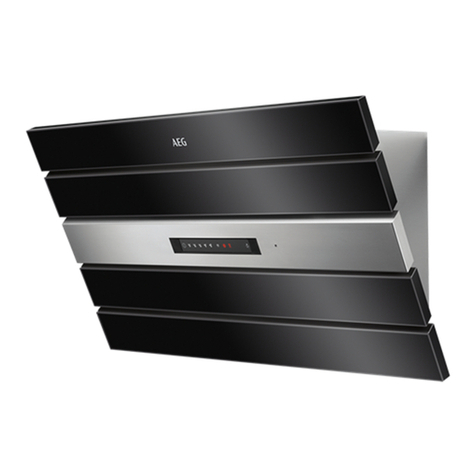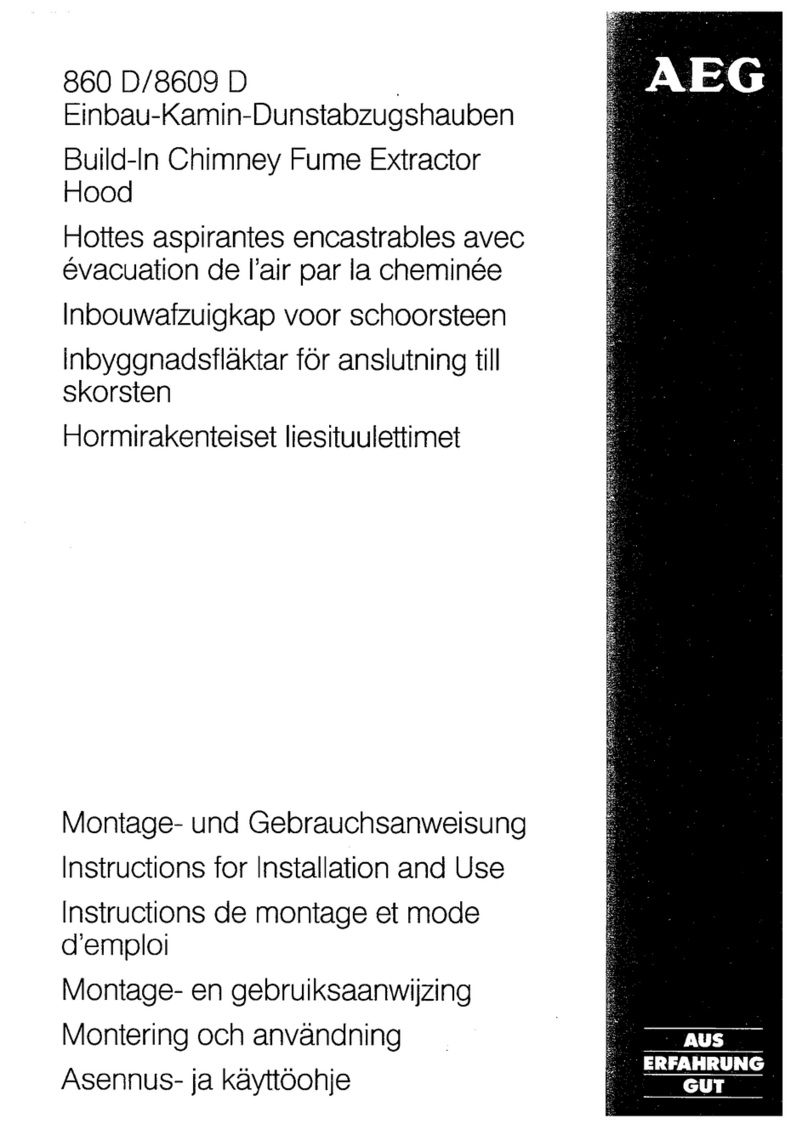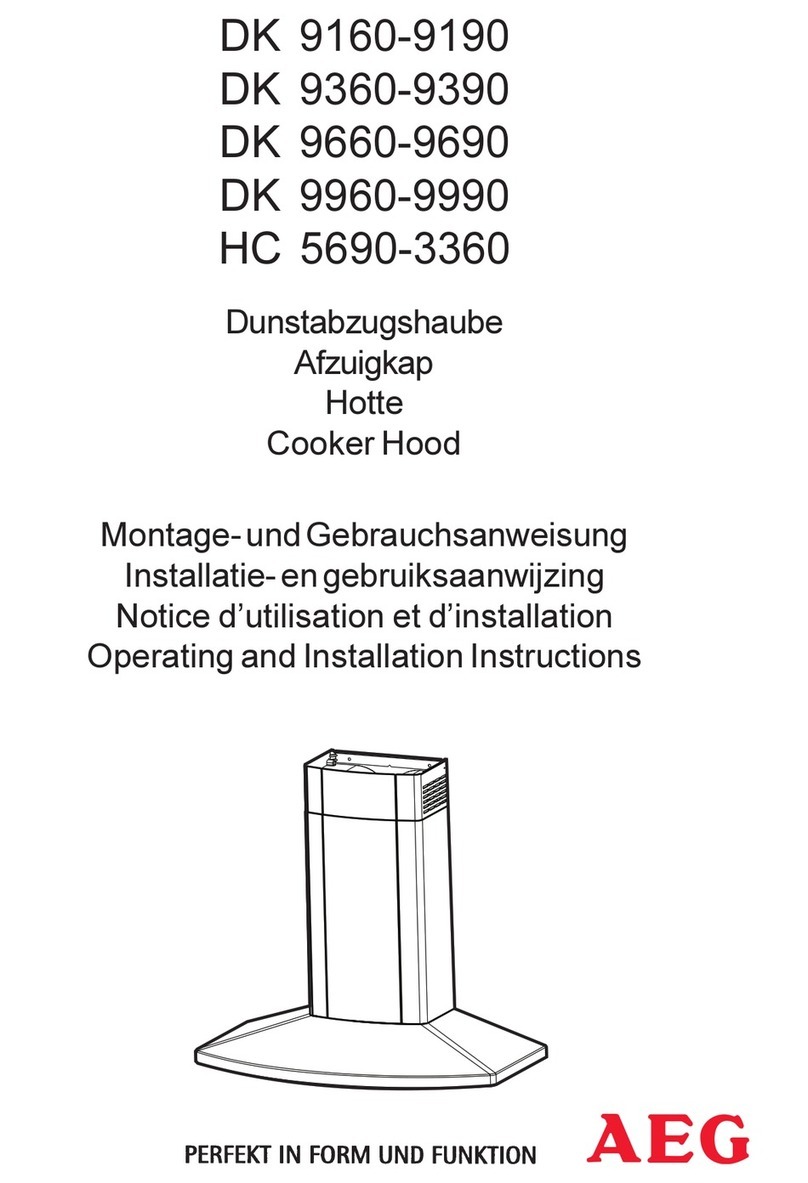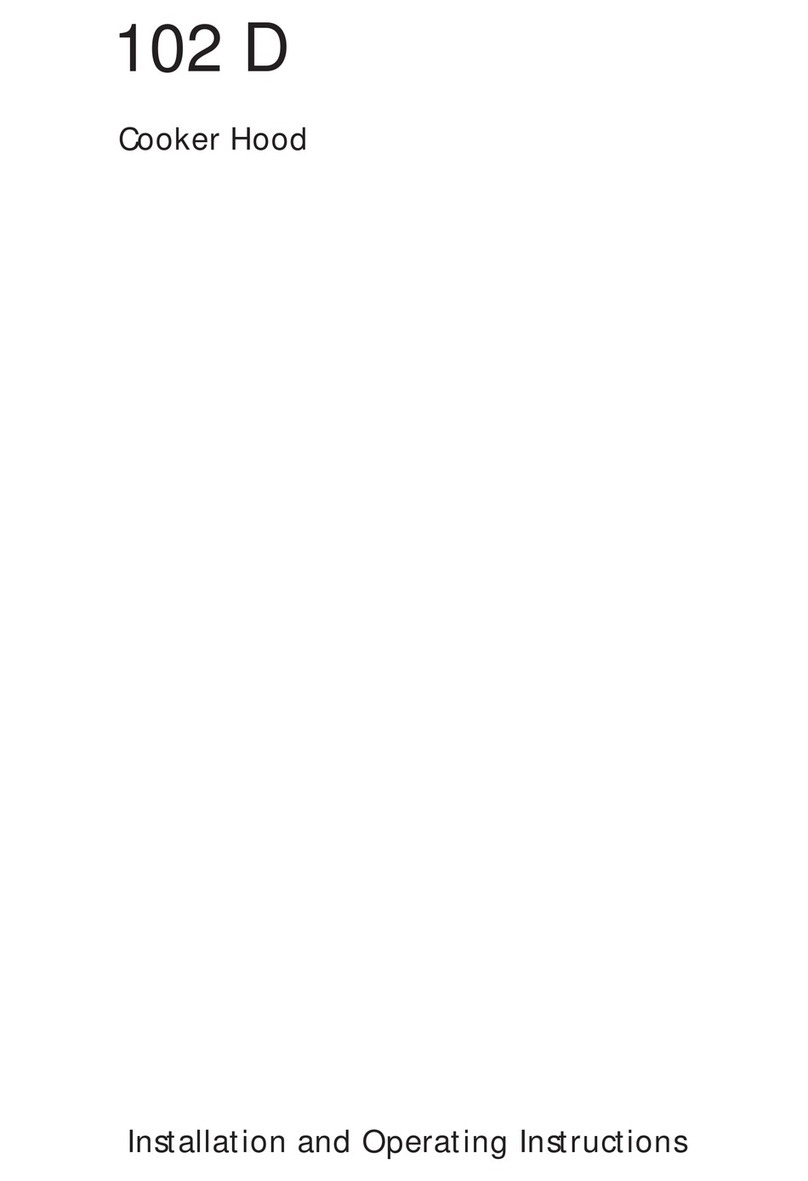55
The air outlet must not be connected to chimney flues or combustion
gas ducts. The air outlet must under no circumstances be connected
to ventilation ducts for rooms in which fuel-burning appliances are
installed.
The air outlet installation must comply with the regulations laid down
by the relevant local authorities.
When the unit is used in extraction mode, a sufficiently large
ventilation hole must be provided, with dimensions that are approxi-
mately the same as the outlet hole.
National and regional building regulations impose a number of
restrictions on using hoods and fuel-burning appliances connected to
a chimney, such as coal or oil room-heaters and gas fires, in the
same room.
Hoods can only be used safely with appliances connected to a
chimney if the room and/or flat (air/environment combination) is
ventilated from outside using a suitable ventilation hole approximately
500-600 cm2 large to avoid the possibility of a depression being
created during operation of the hood.
If you have any doubts, contact the relevant controlling authority or
building inspectors office.
Since the rule for rooms with fuel burning appliances is outlet hole of
the same size as the ventilation hole, a hole of 500-600 cm2, which
is to say a larger hole, could reduce the performance of the extractor
hood.
If the hood is used in its recirculation mode, it will operate simply
and safely in the above conditions without the need for any of the
aforementioned measures.
When the hood is used in its extraction mode, the following rules
must be followed to obtain optimal operation:
- short and straight outlet hose
- keep bends in outlet hose to a minimum
- never install the hoses with an acute angle, they must always
follow a gentle curve.
- keep the hose as large as possible (preferably the same diameter
as the outlet hole).
- the length should be no more than:
3 metres with one 90° bend
2 metres with two 90° bends
Bends of more than 90° will reduce the efficiency of the hood and
reduce the airflow.
Failure to observe these basic instructions will drastically reduce the
performance and increase the noise levels of the extractor hood.







